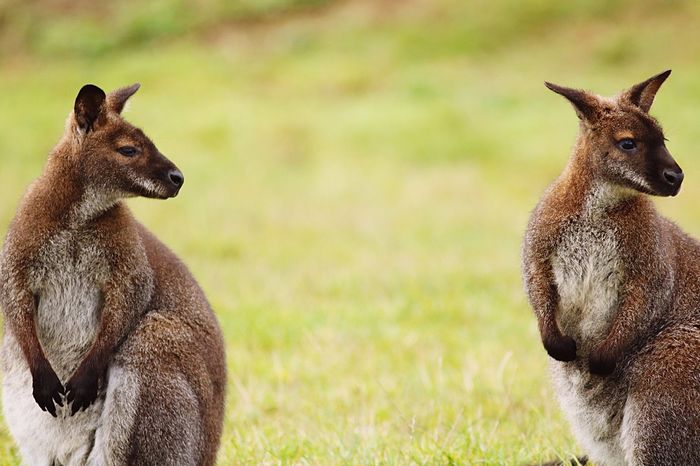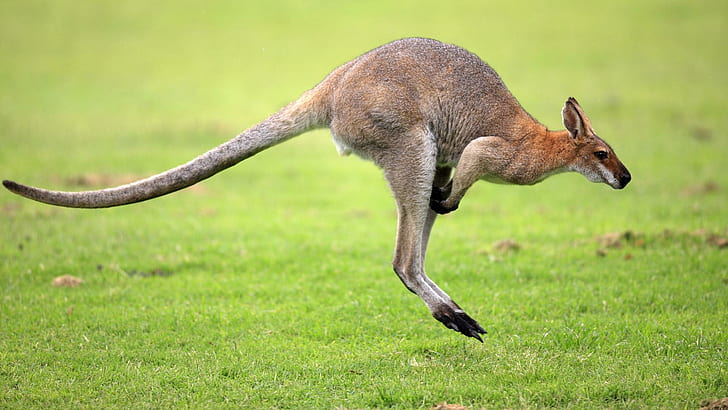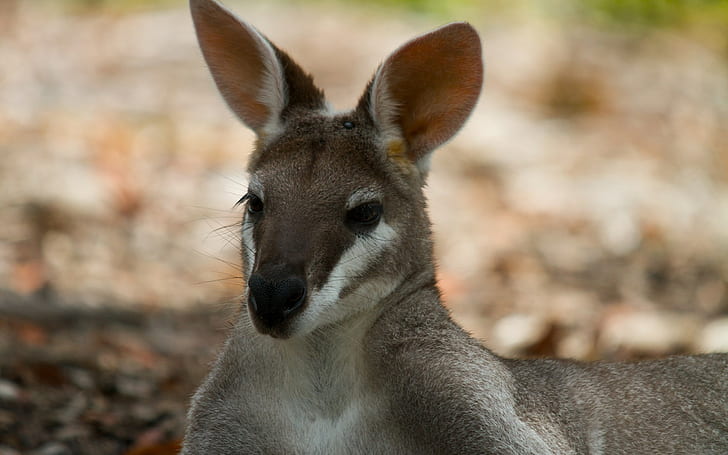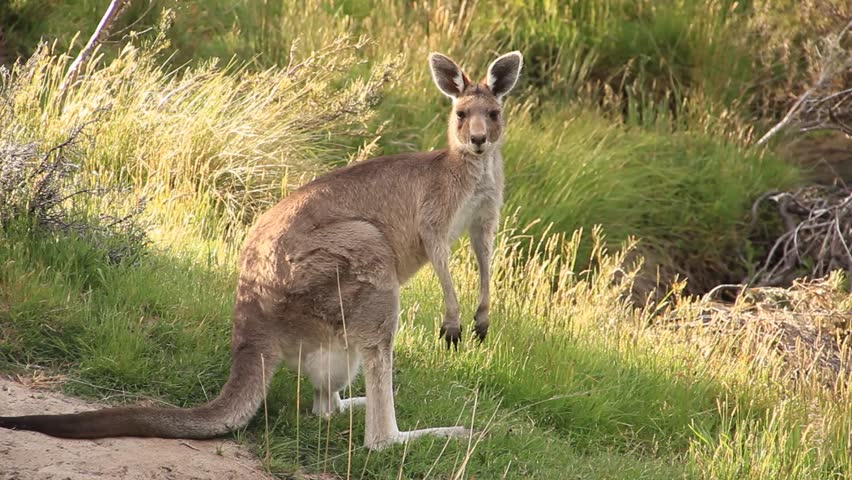A wallaby is a small or mid-sized macropod native to Australia and New Guinea, with introduced populations in New Zealand, UK and other countries. They belong to the same taxonomic family as kangaroos and sometimes the same genus, but kangaroos are specifically categorised into the six largest species of the family.

The term wallaby is an informal designation generally used for any macropod that is smaller than a kangaroo or wallaroo that has not been designated otherwise.

There are 11 species of brush wallabies (g. Macropus, s.g. Protemnodon). Their head and body length is 45 to 105 cm (18 to 41 in) and the tail is 33 to 75 cm (13 to 30 in) long. The six named species of rock-wallabies (g. Petrogale) live among rocks, usually near water; two species are endangered.

The two species of hare-wallabies (g. Lagorchestes) are small animals that have the movements and some of the habits of hares. Often called "pademelons", the three species of scrub wallabies (g. Thylogale) of New Guinea, the Bismarck Archipelago, and Tasmania are small and stocky, with short hind limbs and pointed noses.

Wallabies are hunted for meat and fur. A similar species is the short-tailed scrub wallaby, or quokka (Setonix brachyurus); this species is now restricted to two offshore islands of Western Australia. The three named species of forest wallabies (g. Dorcopsulus) are native to the island of New Guinea.

The dwarf wallaby is the smallest member of the genus and the smallest known member of the kangaroo family. Its length is about 46 cm (18 in) from nose to tail, and it weighs about 1.6 kg (3.5 lb).

According to en.wikipedia











